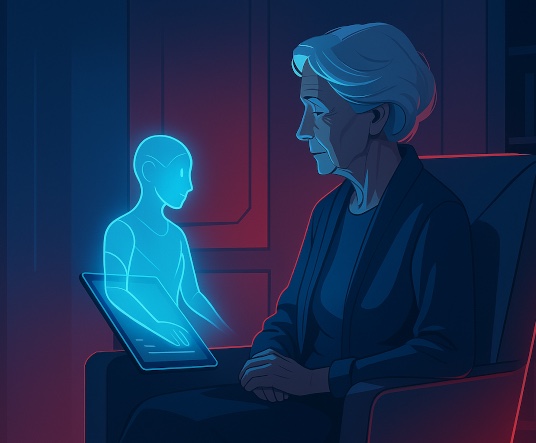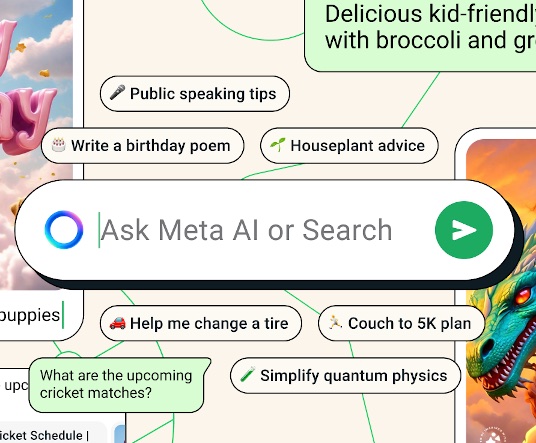So, AI is emulating artists now. What happens next?
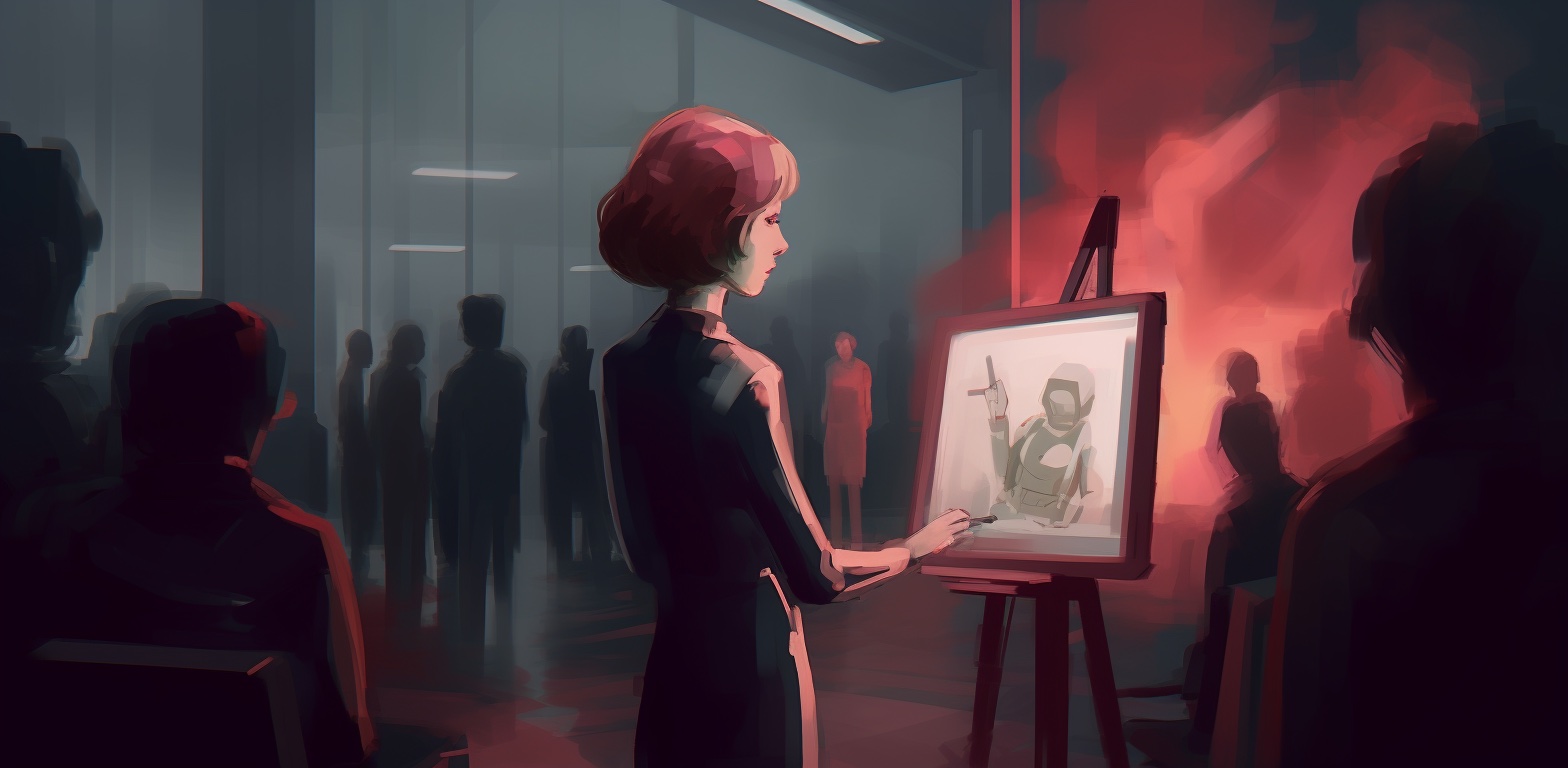
Technology changing how we engage with art
When we pursue artistic endeavors and create art, we all approach it with our own unique take. After all, the footprint of a great artist is what gives their work a distinct and extraordinary quality. This profound personal touch often becomes the very reason why we have our favorites, and why we seek out specific artists; we might be drawn to a writer who weaves exquisitely detailed and intricate passages, or to an actor’s charm and wit in the way they deliver their lines and bring a character to life.
Throughout the majority of human history, seeking out a specific artist’s work was a much more complicated endeavor. Prior to the advent of certain technologies, experiencing art was primarily limited to physical encounters, theaters, or attending live performances. But then, technology revolutionized the accessibility of art by transcending physical limitations and geographical boundaries, making it more available to people worldwide.
With advancements particularly in the realm of visual and audio recording, the way we engage with and appreciate art on a daily basis has been thoroughly transformed. Photography, film, the internet—they all allow people from all walks of life to engage with and experience a diverse range of artistic expressions.
And there’s no stopping technological innovation; yes, it’s time for the inevitable mention of the current boom in artificial intelligence.
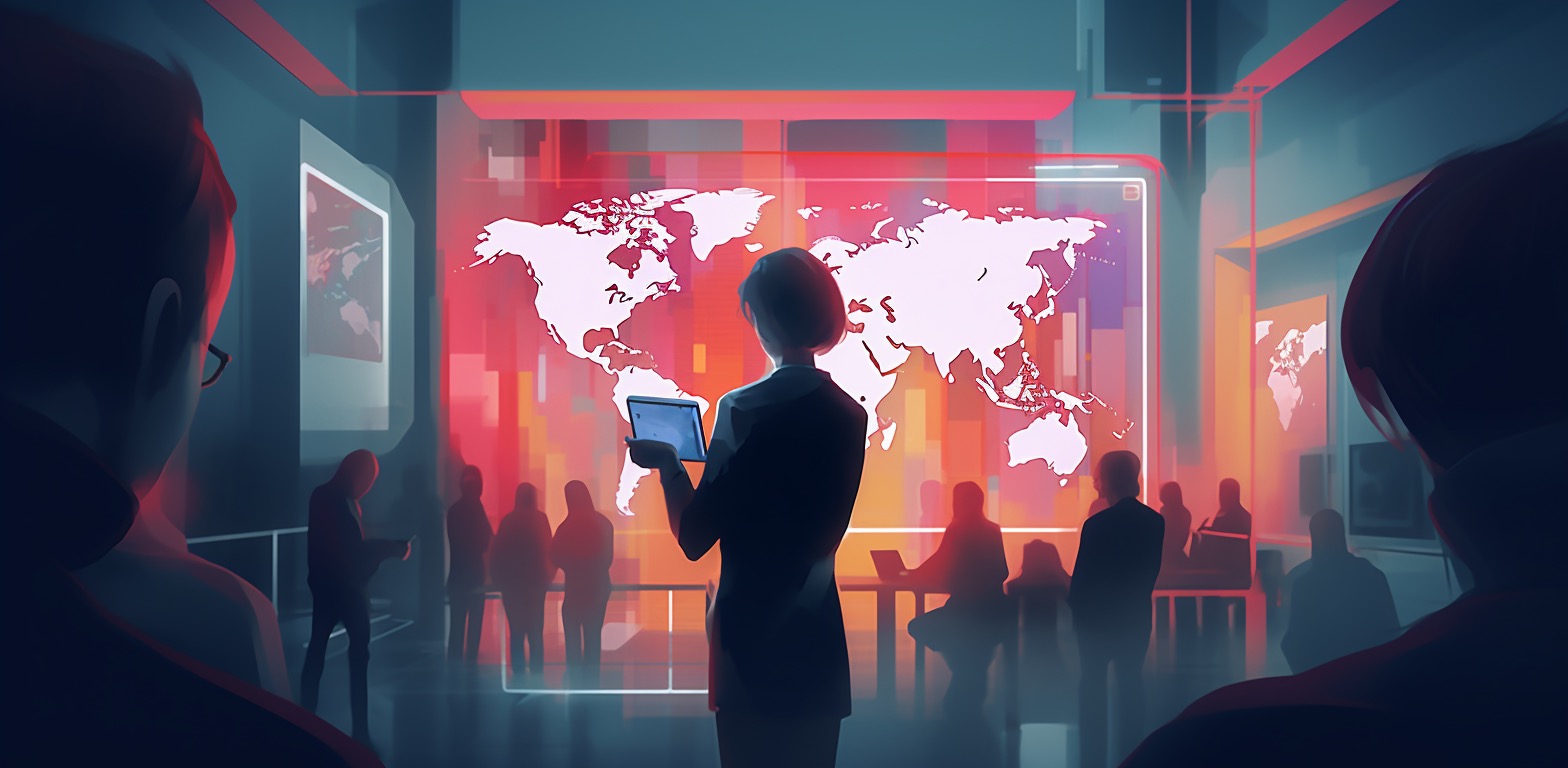
AI emulating artists
There’s no denying that AI will have a profound effect on content creation, and the possibilities are virtually limitless. For now, imagine just one: an AI that could learn the unique style, characteristics, and patterns of a particular artist, author, designer, or creator. Actor, even. Give it a sufficient amount of samples and computational power, and this AI would emulate the style and essence of any artist you want and generate content that could sit comfortably with the artist’s existing body of work, without anyone noticing the difference—and, of course, you wouldn’t even need to leave your home to experience it.
Is this really that far out of reach? We’ve all seen what Dall-E and MidJourney can do when it comes to emulating the styles of famous visual artists. While still in their infancy, AI video generators are already here; you can prompt ChatGPT to (re)write texts in the manner of all kinds of real, historical, or fictional people and characters—and then use an AI video generation plugin to have an avatar read out the output. There’s Google SoundStorm, an AI model that can be used to synthesize pretty convincing speech and dialogue based on as little as a 5-second voice sample. Voice actors are surely not amused—and neither are film actors, apparently; they are increasingly worried about generative AI tools which can replicate their likeness or depict them engaging in various activities.
While actors are rightfully worried for numerous reasons, all these rapidly evolving technologies promise so many possibilities when it comes to content creation: be it capturing the essence of a creator’s style, replicating a creator’s output, creating new media without the need for real actors or locations, or even creating “live” media that add some level of variation each time they are reproduced.
Sampling the footprint of experience
Even though these technologies have made significant progress, there’s still a lot of ground to cover.
Take writers for an example. Since style is dynamic in nature and it invariably includes multiple facets and values, the AI would have to comprehend various nuances of the author’s writing style: word choice, sentence structure, tone, and other elements that define their writing essence. Some of the current AI models do pretty well with these and are already more than capable of being convincing to the general public; but to make their output truly seem authentic to even the greatest fans or experts, this understanding would need to dig deeper to capture the whole essence of the author’s work, which I believe would be possible with a sufficiently advanced narrow AI, at least.
Once perfected, this “content creator emulation” could potentially be the future of many human endeavors—such as copywriting, for instance; writers would develop their own style and tone, then train AI models to write in the same manner.
News, books, articles; there could be many applications. A user could access any kind of information in their favorite author’s style, whether their prompt asks for just two sentences or an entire text.
But why stop at written media? The concept could be applied to various forms of art: music, visual arts, film, you name it. And really, the true value lies in the variability and liveliness of the output. It’s about sampling the footprint of experience to enhance the transmission of information with a deeper sense of individuality.
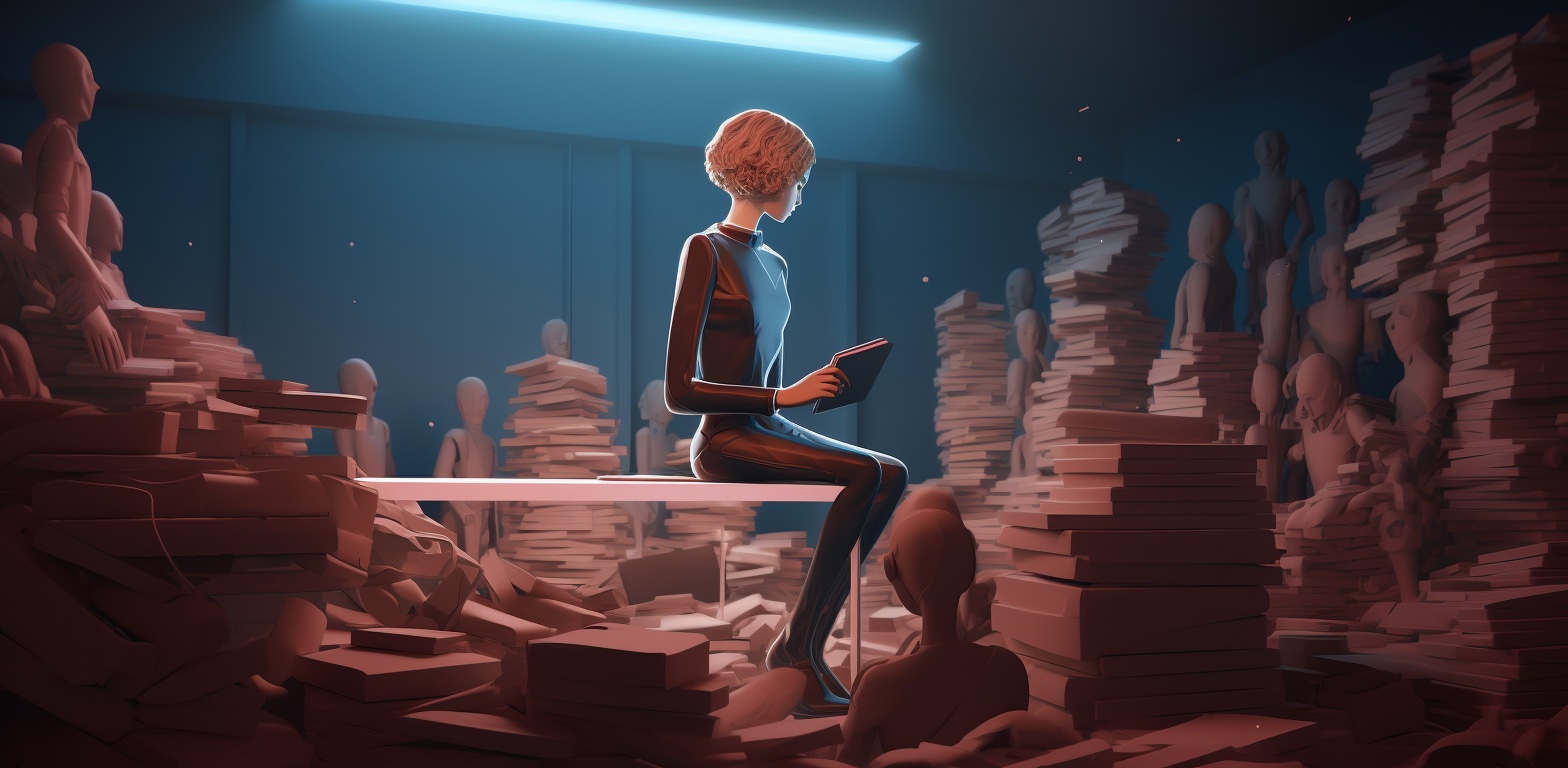
Disclaimer
Before we continue, I’d like to quickly address some sentiments that might arise with the topic at hand.
Some of you might find these speculations interesting, envisioning a future of perhaps unexpected possibilities. Others might feel a sense of apprehension, perceiving a potential dystopia on the horizon. Both are valid.
I just want to note that these are conclusions and conjectures based on some current developments and trends that I’ve observed, and they should be regarded as more of a thought experiment rather than a definitive prediction of the future.
I think speculations like these should be approached with an open mind, recognizing that the future is uncertain and subject to many factors that can shape its trajectory. Along with curiosity and critical thinking, I believe it’s good to maintain willingness to actively contribute to the ongoing discourse surrounding AI and its impact on our society.
With that in mind, let’s think about how sampling the footprint of an author might influence the way we approach art and creativity.
An artist’s innate framework of rules and guides
Before we get into art, let’s talk algorithms. As sets of instructions or rules that serve as guides for completing a task, algorithms are like blueprints that outline the steps needed to achieve an intended outcome. An algorithm doesn’t have to be defined as simple rule-following; instead of rigid and purely sequential, it can also be dynamic and adaptable, as well as employ a degree of randomness as part of its logic or procedure.
If we look at the bigger picture, many aspects of nature and life can be described through algorithms. Both nature and human-made systems often follow patterns and processes that can be modeled or understood in this way: the growth patterns of plants, the movement of celestial bodies, the behavior of animal populations, the formation of weather patterns, biological processes, transportation networks, financial systems, communication protocols… You get the point.
Can we say that creative processes are basically algorithmic in nature as well? And as such, isn’t this algorithmic approach something that is inherent to artists, in a way?
Consider how an artist paints a landscape, for instance. Even though they might not consciously realize it, they’re probably following an implicit set of steps or rules. Maybe they start by laying out the basic shapes, then add in the details, then play with the lighting and colors. But here’s the important part: the “algorithm” (or multiple algorithms) they’re following is unique to them. Another artist might approach the same scene in a completely different manner—beginning with the colors, perhaps, and then defining the shapes. Both methods are algorithms, but they’re distinct and personal to each artist.
It could be argued that an artist’s actual, primary focus is to work on refining their “artistic algorithm”, so to say; this algorithm representing their unique style, vision, creative choices—an intricate framework of rules and guides innate to the artist. But the steps the artist follows are more than just rules—they’re reflections of their own artistic sensibilities and preferences. They’re a representation of their thought processes, their instincts, and their creativity. That’s their artistic algorithm.
Just as a computer algorithm defines how a program functions, an artist’s algorithm defines their artistic process and style. Not to say that algorithms are set in stone; they can be modified and refined, and, since we are human, there is room for randomness as well. Whatever the iteration of their algorithm, the artist then uses it to imprint themself onto their artistic output—they infuse their work with a part of their identity and creative spirit.
Algorithms instead of artworks as the main output of artists
In this new context of AI-generated content creation, this notion of refining one’s artistic algorithm could become even more pronounced; artists could be more like “footprint creators”, or “algorithm creators”, rather than creators of static, finished artworks. The algorithm they develop would become the new product of their artistic expression. This would essentially create a new type of artist: the algorithm artist.
Shifting to algorithms as the primary medium of artistic expression would allow artists to give a more immediate, or more authentic, part of themselves to those who experience their work. Instead of focusing on creating a tangible piece of art, artists would approach their creative process as generating algorithms or blueprints that capture specific “instructions” infused with their artistic essence—which could then be sold, or used by the artist to generate artworks for sale. Or even be made into a subscription model; those are popular, right? ;)
So, the concept of artists selling algorithms infused with their essence would introduce a shift in the traditional understanding of artworks, as it would go beyond the established notion of creating physical artworks or performances as final products and instead have artists create blueprints for making art in a specific, predetermined way.
Basically, the algorithm could be used by the artist to produce both static and dynamic outputs, as the algorithm becomes a vessel for the artist’s essence, allowing it to manifest in various forms and expressions. As such, it would significantly enhance the artist’s capacity for self-expression, opening up a vast array of avenues for versatility in their creative explorations.
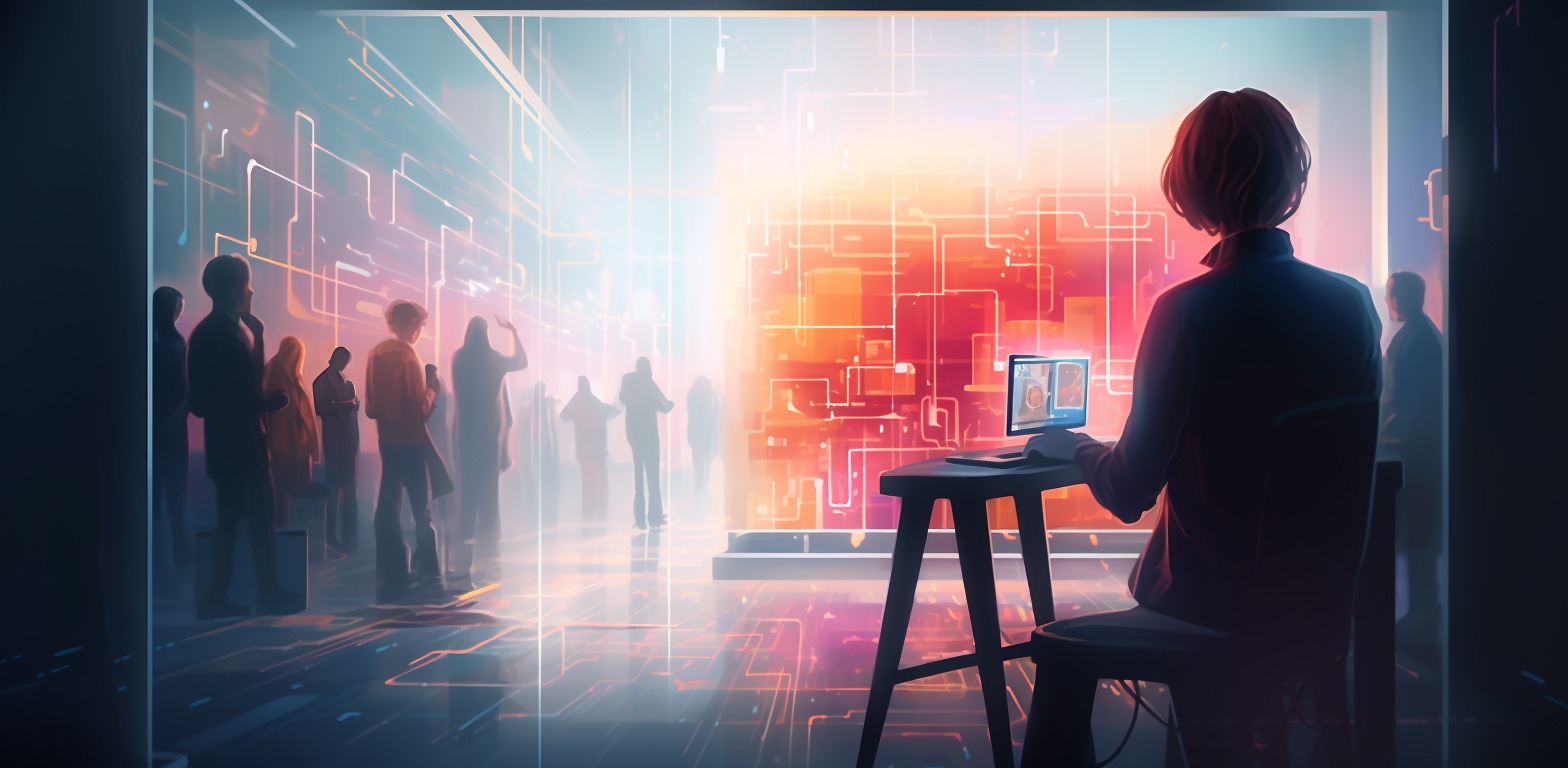
The implications of the algorithm concept
Think about what this could mean to artistic legacy. The essence of an artist no longer able to actively create could continue to live on through this process. The preservation and perpetuation of their legacy would keep their unique style and creative sensibilities alive in new creations.
What’s more, media in general could end up being mainly automatically generated, with producers or directors predominantly taking the role of “guiding” the output, employing constraints and restrictions to their liking for a captivating and dynamic experience.
And dynamic it could literally be, as replayability of various media could be greatly enhanced; books, movies, and games being the most obvious candidates. It opens up new possibilities for a more replayable and immersive experience. Dynamic media that evolves and adapts would offer novelty and perhaps even personalized experiences tailored to each individual.
Static and variable forms of temporal arts
Sure, maintaining the integrity of media has its merits. Unaltered content is easily quotable and memorable. Specific lines, scenes, or melodies become cultural references, allowing people to connect and share experiences. Consistency fosters a collective understanding of the source material (although personal interpretations are always possible).
This has long been true for books and films. Even more so, film adaptations of books often get criticized for straying from the source material. It’s not as if humans are naturally disinclined towards artistic expression that features variability, though. Many people prefer live concerts over studio recordings, or they enjoy theater more than cinematography.
If we consider the notion of temporal arts, or those arts where the work is performed over a period of time, it becomes evident that there is an additional differentiation in terms of the degree of variability experienced among different temporal art forms.
Temporal arts of the more ephemeral kind are those that are inherently transient or live in nature, involving a degree of variability in each experience and creating a unique moment that cannot be precisely replicated. These include live theater performances, live concerts, dance performances, and spoken-word poetry readings. There are inherent variations in each experience due to the live and interactive elements involved, with an audience that is conspicuous and present during the performance and therefore another aspect that adds variability. Each iteration of the performance carries its own energy and essence, influenced by the context, the audience, and the spontaneity of the moment.
Film, recorded music, and written literature, being fixed media, do not have the same inherent variability. Once these art forms are created, there is usually no variation during reproduction that would influence the experience of subsequent instances of viewing or reading. So, once a film is recorded or a piece of literature is published, they can be accessed and experienced in the same manner by different individuals at different times. The fixed nature of these art forms allows for precise replication and consistent experiences. Also, since the audience is not present during the initial performance, it’s not a factor that adds to the variability of the artwork anymore.
The live veneer of static media forms, brought to you by AI
The progression of art forms and technology over time has seen variable temporal arts like live theater and music give rise to new, fixed media: film and recorded music. These forms remove some limitations imposed by the constraints of time and space—namely, the requirement for audiences being physically present during performance.
Consider theater, where the actors and the audience must be present at a specific location at the same time. Movies require the presence of actors at a location as well during filming, if not the audience. However, AI-generated films change the paradigm further; the audience again has freedom when it comes to time and space, but the actors need not be present either, and neither the actors nor the location need to be even real, for that matter. Really, AI could generate realistic performances and create immersive cinematic experiences without the need for physical actors, locations, or real-world constraints.
It could also make the audience a factor for variability again. Imagine an AI-generated film that tailors its narrative, pacing, and visuals based on the viewer’s preferences (or even emotions and reactions, depending how flexible you are regarding privacy—whatever that may be at this point). Each person could have a subtly, or even wildly, different experience. A film could even change over time according to the cumulative experiences of its viewers. Either way, the audience would once more have an influence on the performance, just like it did with live temporal arts to varying degrees.
So, the progression of technology in the form of AI presents a new potential shift, where the line between live and recorded experiences becomes less tangible; meaning, AI could bring fixed media forms of art closer to the ephemeral nature of live performances.
It’s as if we would be circling from static media back to their live counterparts, particularly in terms of the variability they offer, if not in terms of all the constituents being physically present together in the same time and space.

Questions and challenges: authenticity, integrity
I probably don’t even have to state the obvious fact that this speculative evolution of certain types of media, along with new ways of content creation and approaches to art, raises some questions and challenges that would inevitably complicate the matter in the period leading to their widespread prevalence.
What does it all mean for the authenticity and integrity of the creator’s vision? Some creators highly value having total control over the final look and form of their output. They meticulously craft their work, considering every aspect and all the minutiae to get the right feel, convey a specific message, or evoke a particular emotion.
“Total control”, of course, still being a matter of scale in practice. Perfectionists could still aim for variation and be comfortable with giving AI some leeway regarding certain aspects, but with cautiously thought-out constraints as a must.
For example, an artist might use AI to generate detailed backgrounds for their artwork. While they would want to maintain control over the overall composition and focal points, they could leave it to the AI to create complex textures and patterns that would be time-consuming to create manually. Or the artist could set a general color palette and leave it to the AI to decide on the nuances.
However, when it comes to AI tailoring the work to the viewer’s preferences, there could potentially be some variations that the author wouldn’t consider a good representation of their creative idea. Removing the control and agency of the creator, even if it’s slight and for some observers insignificant, adds a whole another layer to the whole “death of the author” thing. (Wonder what Roland Barthes would say to all this.)
Re-evaluating IP rights
Intellectual property rights are another minefield that might become even harder to navigate in a world where AI can emulate and reproduce an artist’s style or add variations to their work. How can intellectual property rights be protected in a scenario where AI can generate derivative works or add variations that blur the boundaries between original and reproduced content? Who owns the replicated essence? Wouldn’t it be a violation of an artist’s intellectual property to recreate their style and essence without explicit consent? What if a late artist never expressed consent for such endeavors during their lifetime—would this be considered a problem?
Then again, this might all become a non-issue with the prevalence of AI-generated actors and artists; companies would have full control over them as they do with their other intellectual properties. If it’s the company that holds the rights to the AI-generated creations, they would have the power to dictate the terms of use, licensing, and distribution. Legal disputes over authenticity or ownership become less pertinent in this scenario, because the companies themselves define the boundaries and limitations of these AI actors and artists.
The notion of IP rights might be redefined in this context. Traditional concepts of intellectual property center around human creativity and originality, and the protection of an individual’s artistic expression. But with AI-generated actors and artists, the creative process and expression are fundamentally different. This could prompt the need for new legal frameworks or interpretations to address the ownership and protection of AI-generated content.
Authentic human performances as a thing of prestige
AI-generated media means that creative output will probably become more accessible and convenient to both create and experience. With the evolution and increasing sophistication of AI-generated dynamic experiences comes the possibility that real human live performances by actors and musicians might end up occupying a more specialized and niche space in the overall artistic landscape.
They would, of course, continue to hold value for those who seek the raw and unfiltered expressions of human artists, as they evoke a sense of authenticity and shared experience that resonates with people on a profound level. The imperfections and vulnerabilities inherent in live art are often celebrated and cherished exactly because they show humanity. Not to mention that the shared physical space and the direct interaction between artists and spectators create a tangible connection that people would likely continue to perceive as having value—if for nothing else, then solely because it involves real humans. And an audience that appreciates these notions found in live human art would most likely ensure the enduring presence of human performers.
So, there will be value in authenticity; the implication might be more on the lines of performances with real humans becoming some sort of a prestige thing. Booking real musicians, actors, and other artists might be a future way of flaunting wealth for certain people. If the masses go see holograms on the regular, the real deal becomes exclusive and special even if virtually (heh) identical in every possible way—or even inferior in performance—to the simulation.
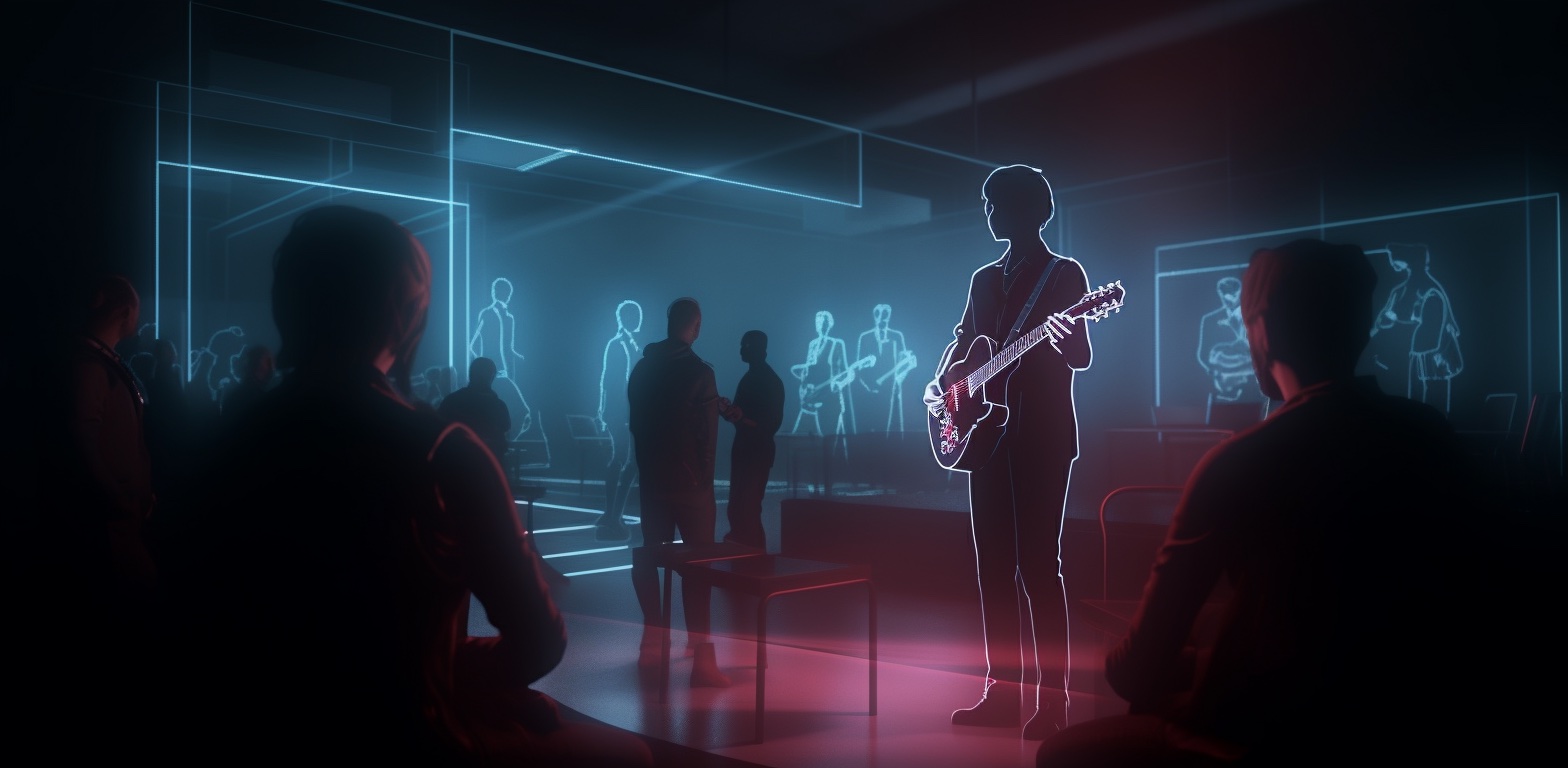
The rich landscape of human and AI artistry
Now, not to finish on too bleak a note; as technology advances, the coexistence of AI-generated media and human performances and art will shape the artistic landscape, leading to diverse options for people to engage with and appreciate both human expression and technological innovation in their own right.
AI-generated media could provide artists with a plethora of avenues for various forms of creativity, enabling accessible and convenient production of different forms of art. And this would truly be significant, as people would be free to explore their own creative potential and engage with art in ways that were previously unimaginable.
And it would still be us humans creating these artworks and performances through developing our artistic algorithms. What we have within us, what makes us human, is what will allow us to create those algorithms, and—hopefully—that’s something that’s unique.
We would leverage our innate qualities, emotions, imagination, intuition—all to shape and refine our new tools for expression. So, the algorithms would not merely be cold, mechanical sets of instructions: it is these human elements that would bring a sense of uniqueness and depth to them and, consequently, the artworks generated from them.
In the end, it will be the fusion of human essence and technological capabilities that will drive the evolution of artistic practices and offer new dimensions for artistic exploration and self-expression.

